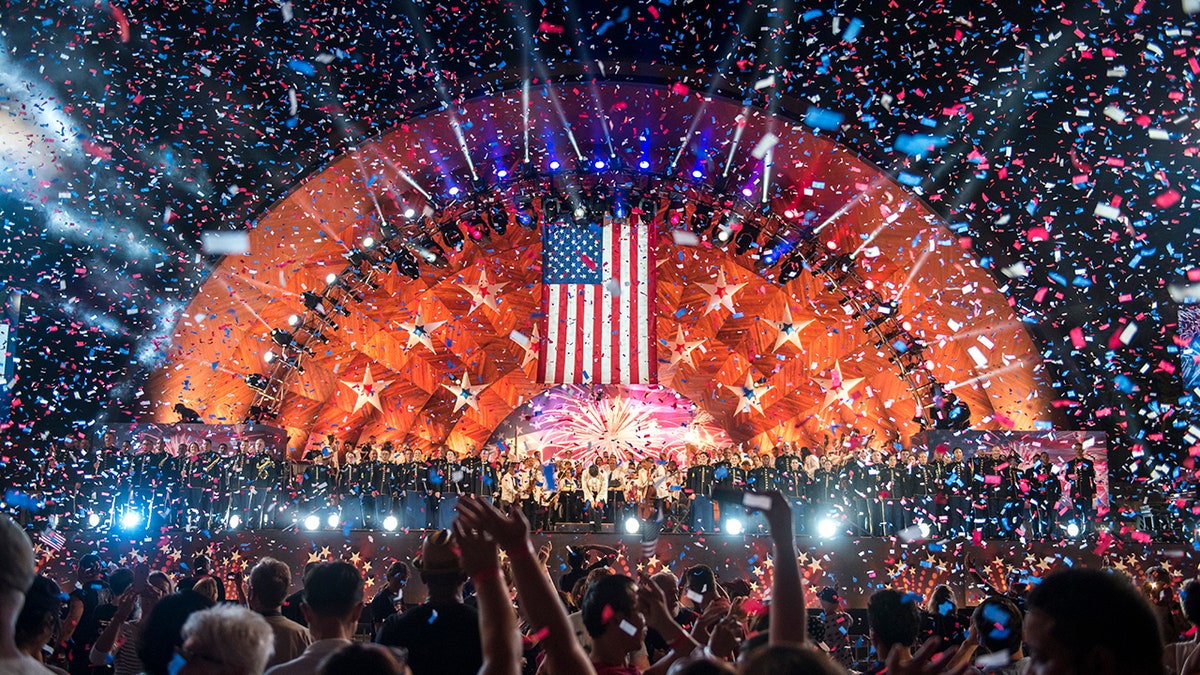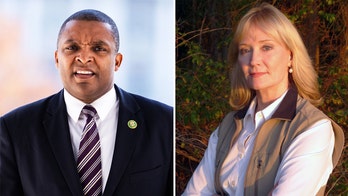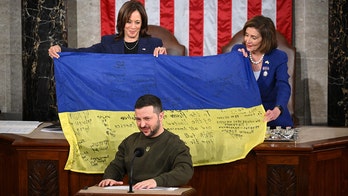Fourth of July: DIY projects that bring patriotic fun to whole family
PragerU Kids director Jill Simonian shares some fun DIY projects to educate your kids on the foundations of American history for Independence Day.
Each year, barbecues, yard games, concerts, parades and fireworks displays are all traditions for Americans celebrating the Fourth of July in the United States.
The day is celebrated to mark the nation's birth after becoming independent of Great Britain.
Here are some fun facts that you may not know about the Fourth of July.

The first Fourth of July fireworks came in 1777. (iStock)
JULY 4TH QUIZ! HOW WELL DO YOU KNOW YOUR FACTS ABOUT INDEPENDENCE DAY?
- Independence was not declared on July 4th
- 26 original copies of the Declaration of Independence still exist
- George Washington’s reading of the Declaration of Independence on July 9, 1776, led to a riot in New York City, resulting in King George III’s statue being torn down
- After the attack on Pearl Harbor, the Declaration of Independence, U.S. Constitution and other documents were secretly stashed at Fort Knox during World War II
- 56 men signed the Declaration of Independence, but many of them never became famous
- The Fourth of July wasn’t made a federal holiday until 1870
- The first Fourth of July fireworks were in 1777
- The oldest Fourth of July parade is in the smallest state
FOURTH OF JULY: MEDIA'S HISTORY OF BASHING AMERICA, SYMBOLS OF DEMOCRACY
1. Independence was not declared on July 4th

Fourth of July is celebrated with parades, concerts, fireworks and more. (Nicholas Pfosi for The Boston Globe via Getty Images)
July 4, 1776, is significant because that is the day Congress officially adopted the Declaration of Independence document. However, the second Continental Congress actually voted for independence on July 2.
In a letter to his wife, Abigail, John Adams predicted that future generations would celebrate July 2 as Independence Day, saying, "The second day of July, 1776, will be celebrated by succeeding generations as the great anniversary festival. It ought to be solemnized with pomp and parade, with shows, games, sports, guns, bells, bonfires, and illumination, from one end of this continent to the other, from this time forward forevermore."
2. 26 original copies of the Declaration of Independence still exist
After the Declaration of Independence was adopted, the "Committee of Five," which consisted of Thomas Jefferson, John Adams, Benjamin Franklin, Roger Sherman and Robert R. Livingston, was responsible for the reproduction of the approved text.
On July 5, Philadelphia printer John Dunlap sent out all the copies he made to newspapers across the 13 colonies, in addition to commanders of the Continental troops and local politicians. There were initially hundreds of copies known as "Dunlap broadsides," but only 26 of them survive today and are mostly exhibited in museum and library collections. One of the most recently discovered "Dunlap broadsides" was found by a Philadelphia man in the back of a picture frame that was purchased at a flea market for $4 in 1989.

The Declaration of Independence was signed in 1776. (iStock)
EVERYTHING YOU NEED FOR A PATRIOTIC FOURTH OF JULY
3. George Washington’s reading of the Declaration of Independence on July 9, 1776, led to a riot in New York City, resulting in King George III’s statue being torn down
When one of the "Dunlap broadsides" arrived in New York City on July 9, 1776, George Washington, who was the Commander of the Continental forces in New York at the time, read the document to the crowd in front of city hall. Many of them cheered and tore down a statue of King George III nearby. The statue was later melted down and used to make tens of thousands of musket balls for the American army.
4. After the attack on Pearl Harbor, the Declaration of Independence, U.S. Constitution and other documents were secretly stashed at Fort Knox during World War II
After the attack on Pearl Harbor on Dec. 7, 1941, Secret Service Agent Harry Neal was tasked with transferring "priceless historical documents" to a secure facility away from Washington, D.C. After meeting with librarian Archibald MacLeish at the Library of Congress, Neal orchestrated the logistics of how they would discreetly transport the documents out of D.C. to Fort Knox, which is near Louisville, Kentucky. Abraham Lincoln’s Gettysburg Address, the Gutenberg Bible and the Articles of Confederation were also stored in some of the cases at Fort Knox. The Declaration was returned to Washington, D.C., in 1944.
5. 56 men signed the Declaration of Independence, but many of them never became famous
Signers of the Declaration of Independence like John Adams and Thomas Jefferson went on to dedicate their lives to public service and serve as the second and third presidents of the United States, respectively. However, several of the signers are only remembered by history, such as Button Gwinnett of Georgia and New Hampshire’s Josiah Bartlett, whose name was used with a slightly different spelling, as Martin Sheen’s presidential character in "West Wing."

Different Fourth of July celebrations occur across the United States. (David McNew/Getty Images)
CLICK HERE TO GET THE FOX NEWS APP
6. The Fourth of July wasn’t made a federal holiday until 1870
Even though Fourth of July celebrations have occurred for many years, it wasn’t made an unpaid federal holiday until 1870. It wasn’t until 1941 when the holiday was added to the list of paid holidays for federal employees.
7. The first Fourth of July fireworks were in 1777
The first Fourth of July fireworks were set off on July 4, 1777. On this day, fireworks were lit in Philadelphia and Boston. Over the years, setting off fireworks has become a popular Fourth of July tradition with displays all across the country.
8. The oldest Fourth of July parade is in the smallest state
Bristol, Rhode Island, is home to the oldest Fourth of July parade in the country. The first ever Bristol Fourth of July parade was in 1785.





